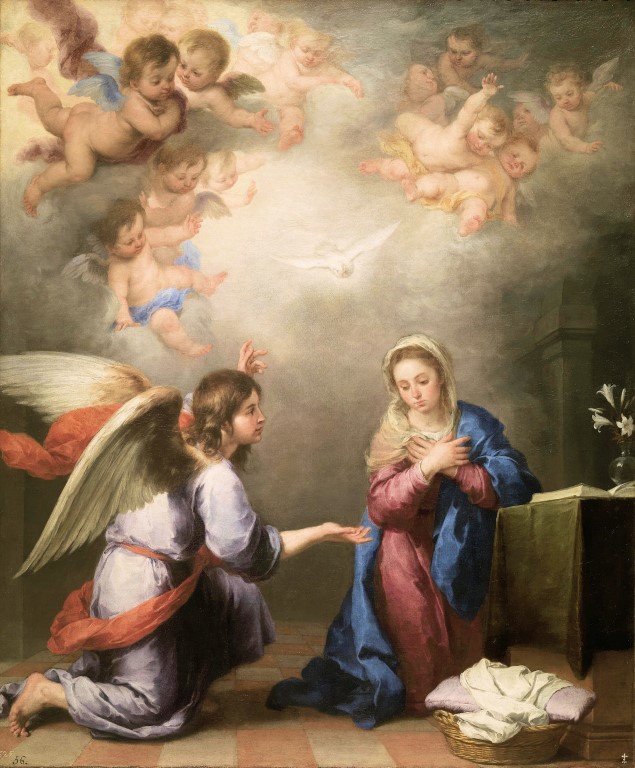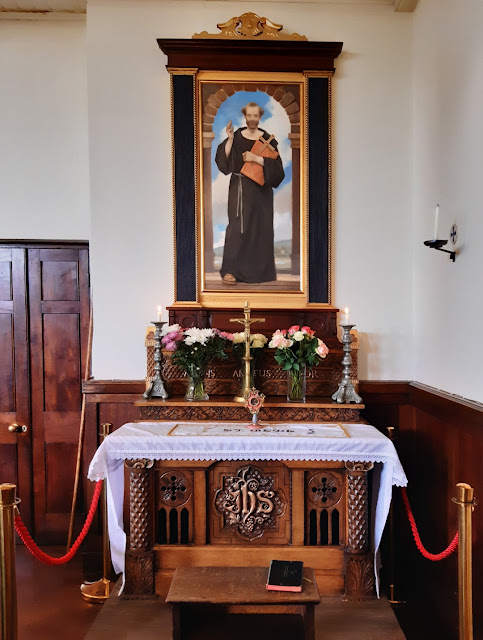Some notes on clerical celibacy
In the synoptic gospels we hear of how Our Lord cured Simon Peter's mother-in-law from fever. In the discussion of clerical celibacy, this text is routinely brought out as a knock-down argument. The apostles were married so why can't priests marry? Oddly, though, we never hear anything of St Peter's wife, or indeed of any of the wives of the other apostles.
Then we come to St Paul's injunction in 1 Timothy 3.2 that the Bishop should be the husband of only one wife. It would be improbable to suggest that St Paul was dealing with a problem of polygamy. Much more likely he was saying that the Bishop should not be someone who had married a second wife after his first wife had died.
These indications from scripture are tantalising but need further illumination. Fortunately, there have been a number of studies that have cast light on the historical practice of the Church, arguing that the discipline of clerical celibacy is of apostolic origin.
Christian Cochini presented the historic debate between Bickell and Funk over certain key texts from the Council of Nicea, the Council of Elvira and others. He also exhaustively examined all of the cases from the first seven centuries of the Church’s history which were relevant to the issue of clerical marriage. His work supported the thesis that there was an apostolic rule of continence for those clerics who were married and that the legislation of the Church against the clerical use of marriage is witness to this ancient tradition.
Roman Cholij examined in particular the Council in Trullo of 691, concluding that the Council’s permission for the clerical use of marriage was an innovation, giving rise to the legislative anomaly in the East (and occasionally in the West) whereby married men may be ordained but ordained men may not marry. This law, which is still a part of modern codes of canon law, makes little sense apart from the historic rule of continence.
Stefan Heid’s work continues this school of thought, adding further research on the legend of Paphnutius which had long been used to justify the conclusion that clerical continence was not of apostolic origin. He shows that the likely origin of the legend was to further the interest of the Novatians who had not practised continence. He also adds further material on the injunction of Paul in 1 Timothy that the bishop must be the husband of only one wife.
Cardinal Stickler’s brief account is a most useful summary of the case for clerical celibacy. He notes that there have been a number of important recent studies devoted to the history of celibacy in both the East and the West, and that,
The later imposition of a rule that clerics should be unmarried was a recognition of the growing impracticality, with the development of marriage, and the problems of inheritance, of ordaining men who had been previously married, even if there were a rule of continence. It obviously makes sense today when people would find it hard to understand a system in which men who are married would be expected to change and live a life of continence.
We should also remember in any discussion of clerical celibacy, that the Council of Trent, in its 24th session in 1563, duly defined in the canons on the sacrament of matrimony (canon 10) that
Throughout the history of the Church, the discipline of clerical continence or celibacy has been transgressed by some clerics. The Church has consistently fought to reform the life of clerics in the face of immorality which has been greater at some times than others. Today we live in a time when reform is needed again. We should remember that when St Charles Borrommeo went to Milan, the vast majority of his priests were living in concubinage - and he reformed his diocese. The Council of Trent was largely successful in reforming the clergy.
At the present time, we should give thanks for the faithfulness and purity of most students and young priests. They have been formed at a time when appallingly bad example has been given by some of their senior brethren. They have reckoned the cost and turned into the storm with courage and resolution. Let us pray that they become the vanguard of the new reform of the clergy, following in the footsteps of their forbears in the counter-reformation and at many other times in the history of the holy Roman Church.
Then Peter said: Behold, we have left all things, and have followed thee. Who said to them: Amen, I say to you, there is no man that hath left house, or parents, or brethren, or wife, or children, for the kingdom of God's sake, who shall not receive much more in this present time, and in the world to come life everlasting. (Lk 18.28-30)This suggests the possibility that St Peter had in fact left his family to follow the Lord. Such a course of action would be unacceptable in our time, but in the culture of Palestine in the time of Our Lord, the extended family would mean that it was possible.
Then we come to St Paul's injunction in 1 Timothy 3.2 that the Bishop should be the husband of only one wife. It would be improbable to suggest that St Paul was dealing with a problem of polygamy. Much more likely he was saying that the Bishop should not be someone who had married a second wife after his first wife had died.
These indications from scripture are tantalising but need further illumination. Fortunately, there have been a number of studies that have cast light on the historical practice of the Church, arguing that the discipline of clerical celibacy is of apostolic origin.
Christian Cochini presented the historic debate between Bickell and Funk over certain key texts from the Council of Nicea, the Council of Elvira and others. He also exhaustively examined all of the cases from the first seven centuries of the Church’s history which were relevant to the issue of clerical marriage. His work supported the thesis that there was an apostolic rule of continence for those clerics who were married and that the legislation of the Church against the clerical use of marriage is witness to this ancient tradition.
Roman Cholij examined in particular the Council in Trullo of 691, concluding that the Council’s permission for the clerical use of marriage was an innovation, giving rise to the legislative anomaly in the East (and occasionally in the West) whereby married men may be ordained but ordained men may not marry. This law, which is still a part of modern codes of canon law, makes little sense apart from the historic rule of continence.
Stefan Heid’s work continues this school of thought, adding further research on the legend of Paphnutius which had long been used to justify the conclusion that clerical continence was not of apostolic origin. He shows that the likely origin of the legend was to further the interest of the Novatians who had not practised continence. He also adds further material on the injunction of Paul in 1 Timothy that the bishop must be the husband of only one wife.
Cardinal Stickler’s brief account is a most useful summary of the case for clerical celibacy. He notes that there have been a number of important recent studies devoted to the history of celibacy in both the East and the West, and that,
These studies have either not yet penetrated the general consciousness or they have been hushed up if they were capable of influencing that consciousness in undesirable ways.This unfortunately remains the case as articles continue to appear without finding it necessary even to address the research of these scholars.
The later imposition of a rule that clerics should be unmarried was a recognition of the growing impracticality, with the development of marriage, and the problems of inheritance, of ordaining men who had been previously married, even if there were a rule of continence. It obviously makes sense today when people would find it hard to understand a system in which men who are married would be expected to change and live a life of continence.
We should also remember in any discussion of clerical celibacy, that the Council of Trent, in its 24th session in 1563, duly defined in the canons on the sacrament of matrimony (canon 10) that
If any one says, that the marriage state is to be placed above the state of virginity, or of celibacy, and that it is not better and more blessed to remain in virginity, or in celibacy, than to be united in matrimony; let him be anathema.Of course, we do today reflect on the holiness of the vocation of marriage, but the above is the defined doctrine of the Church to which we are bound to give the assent of faith.
Throughout the history of the Church, the discipline of clerical continence or celibacy has been transgressed by some clerics. The Church has consistently fought to reform the life of clerics in the face of immorality which has been greater at some times than others. Today we live in a time when reform is needed again. We should remember that when St Charles Borrommeo went to Milan, the vast majority of his priests were living in concubinage - and he reformed his diocese. The Council of Trent was largely successful in reforming the clergy.
At the present time, we should give thanks for the faithfulness and purity of most students and young priests. They have been formed at a time when appallingly bad example has been given by some of their senior brethren. They have reckoned the cost and turned into the storm with courage and resolution. Let us pray that they become the vanguard of the new reform of the clergy, following in the footsteps of their forbears in the counter-reformation and at many other times in the history of the holy Roman Church.
References
Cholij, R. Clerical Celibacy in East and West Gracewing. Herefordshire. 1989
Cholij, R. Clerical Celibacy in East and West Gracewing. Herefordshire. 1989
Cochini, C. The apostolic origins of priestly celibacy Ignatius. San Francisco. 1990
Heid, S. Celibacy in the Early Church. Ignatius. San Francisco. 2000
Heid, S. Celibacy in the Early Church. Ignatius. San Francisco. 2000
Stickler, A. The case for clerical celibacy Ignatius. San Francisco. 1995



